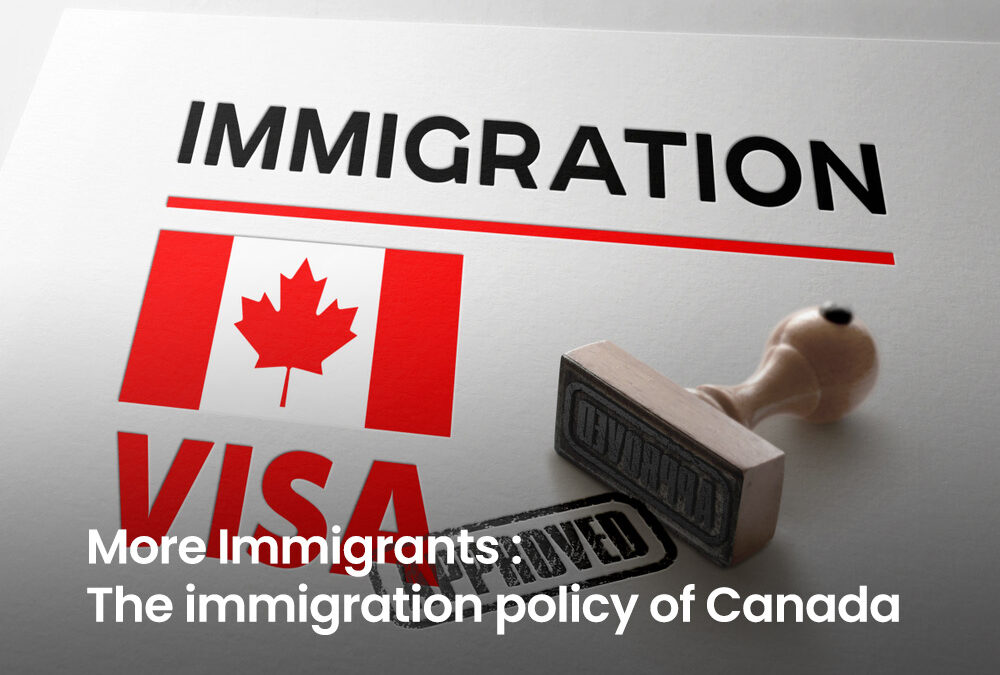Through laws and regulations, the government determines who is permitted to immigrate to Canada. Immigration policy has been established since Confederation to boost the population, acquire new land, and provide labour and capital to the economy. Due to immigration policy’s propensity to reflect current national security or racial views, certain migrant groups have been subject to discriminatory limitations. In the 1980s, Canada’s present immigration policy was released. At the time, the government did not make as many long-term plans and frequently based immigration targets on the status of the economy. Less than 90,000 immigrants came to Canada in 1984. Early in the 1990s, the Conservative-led Canadian government foresaw a labor shortage and increased immigration targets to 250,000 new permanent residents in just eight years. The Liberal administration that succeeded expanded on these objectives but, as a result of the subsequent economic collapse, started to prioritize drawing in more immigrants from the economic class and reducing Canada’s percentage of immigrants from the social and family classes.
Immigrate To CanadaUp to the current Liberal administration entering office in 2015, Canada welcomed about 260,000 immigrants annually. Before the COVID-19 pandemic in 2020, the goals were raised to 300,000 and 340,000.
Online Canadian Immigration Assessment FormDue to border closures and other travel limitations in 2020, IRCC found it challenging to process applications. However, Canada welcomed 405,000 more permanent residents than ever before in 2021, exceeding its immigration target. The Canadian Experience Class and Provincial Nomination Program’s large slot allotment helped to achieve these objectives (PNPs).
Canada is going through a remarkable period of having around one million unfilled vacancies and a labor shortage. Both act as impetuses for the country’s growing immigration objectives. With 1.4 children born to every woman, Canada has one of the lowest birth rates worldwide. This has an extra detrimental effect on the labor shortage.
Due to the slow natural increase in population (the number of births still outnumbers the number of deaths each year), immigration will soon be Canada’s only option for expanding its labour force and population. Additionally, Canada needs immigrants to maintain a healthy tax base to continue paying for necessities like healthcare and education.
Canada has one of the oldest populations in the world. Nine million people, or more than one-fourth of Canada’s population, will reach retirement age by 2030. All areas of the economy will experience a severe labour shortage. The government must publish the Immigration Levels Plan each year by November 1 in accordance with the Immigration and Refugee Protection Act (IRPA), the primary immigration law in Canada. The announcement following the most recent federal election was delayed until September 20, 2021, and the first announcement was made in February. The 2022–2024 immigration levels plan was the second to be published in 2022.
Recent research on immigration to Canada, “Portrait of Immigration to Canada,” indicates that 23% of Canadians are or have been landed immigrants or permanent residents. This is the population’s most significant proportion of immigrants since Canada’s declaration of independence in 1867. This amount will include 8.3 million new immigrants in 2021. By 2041, the percentage of immigrants in the country is predicted to reach 34%, according to Statistics Canada.
Recent immigrants have a younger age distribution than the general population, which helps to mitigate the effects of a labour shortage in Canada, according to Statistics Canada. Nearly 80% of the increase in Canada’s labour force between 2016 and 2021 was attributable to immigrants.



